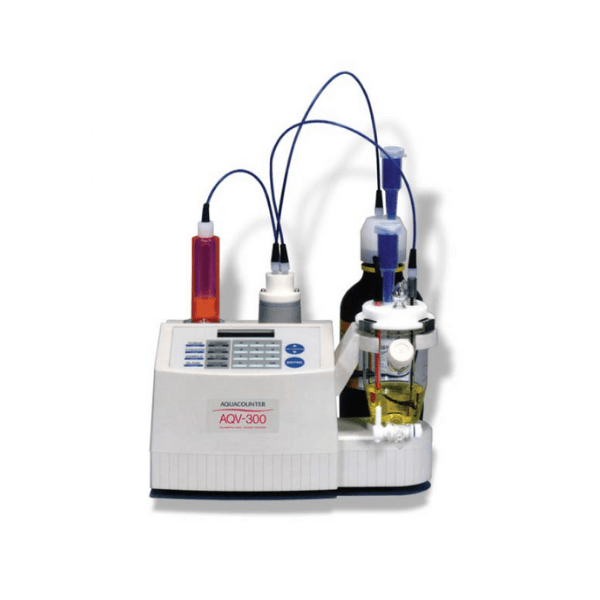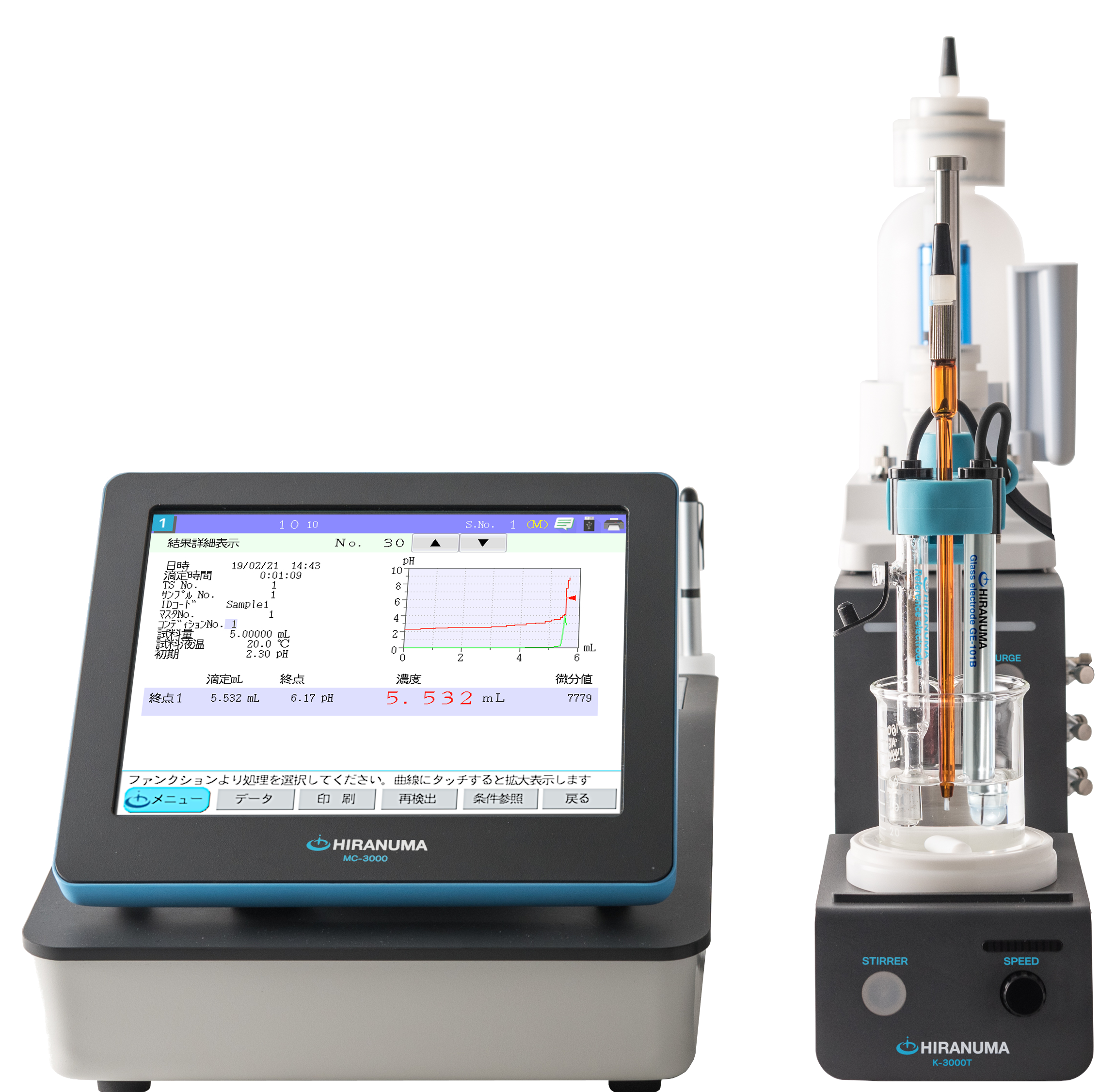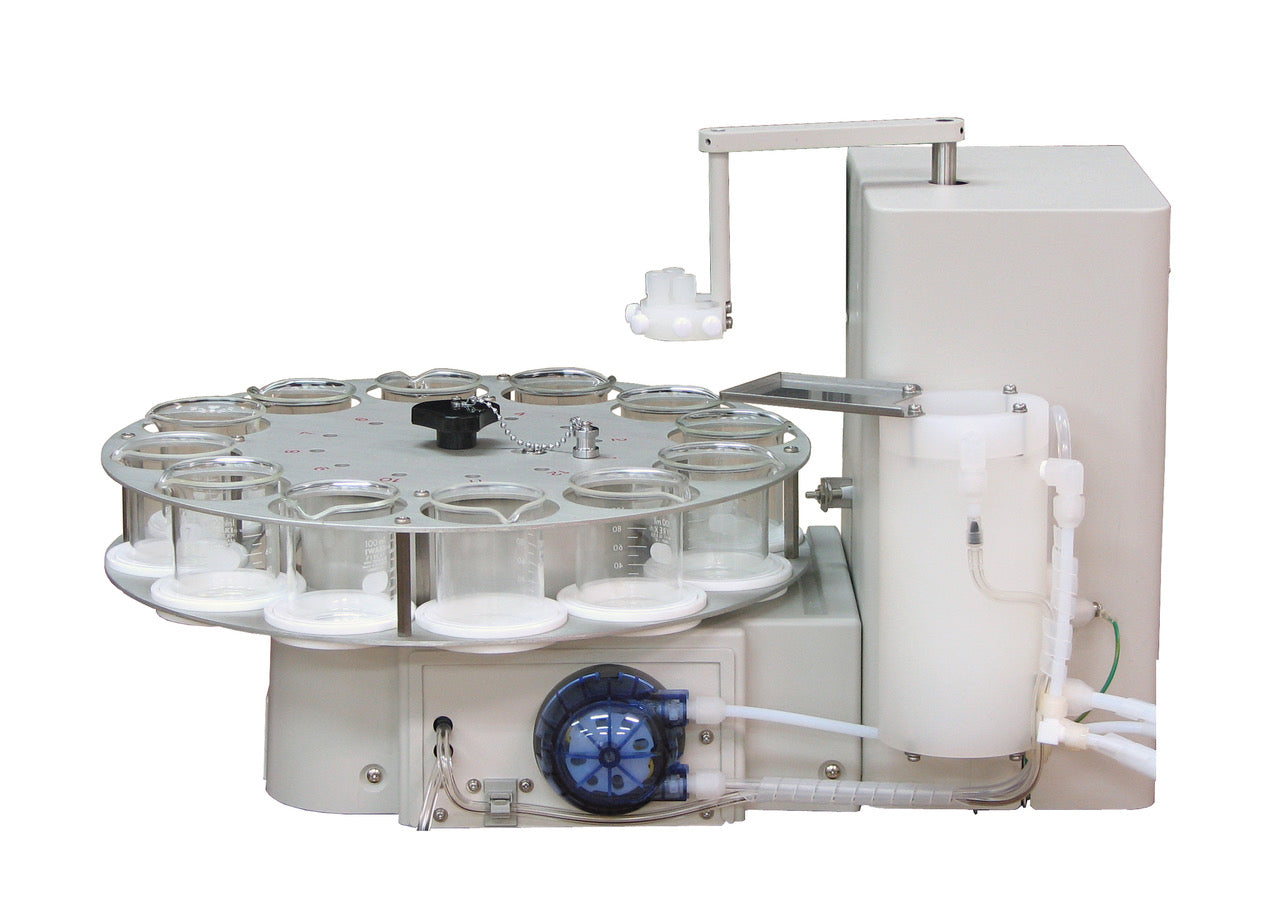Karl Fischer & Potentiometric Titration Application Library
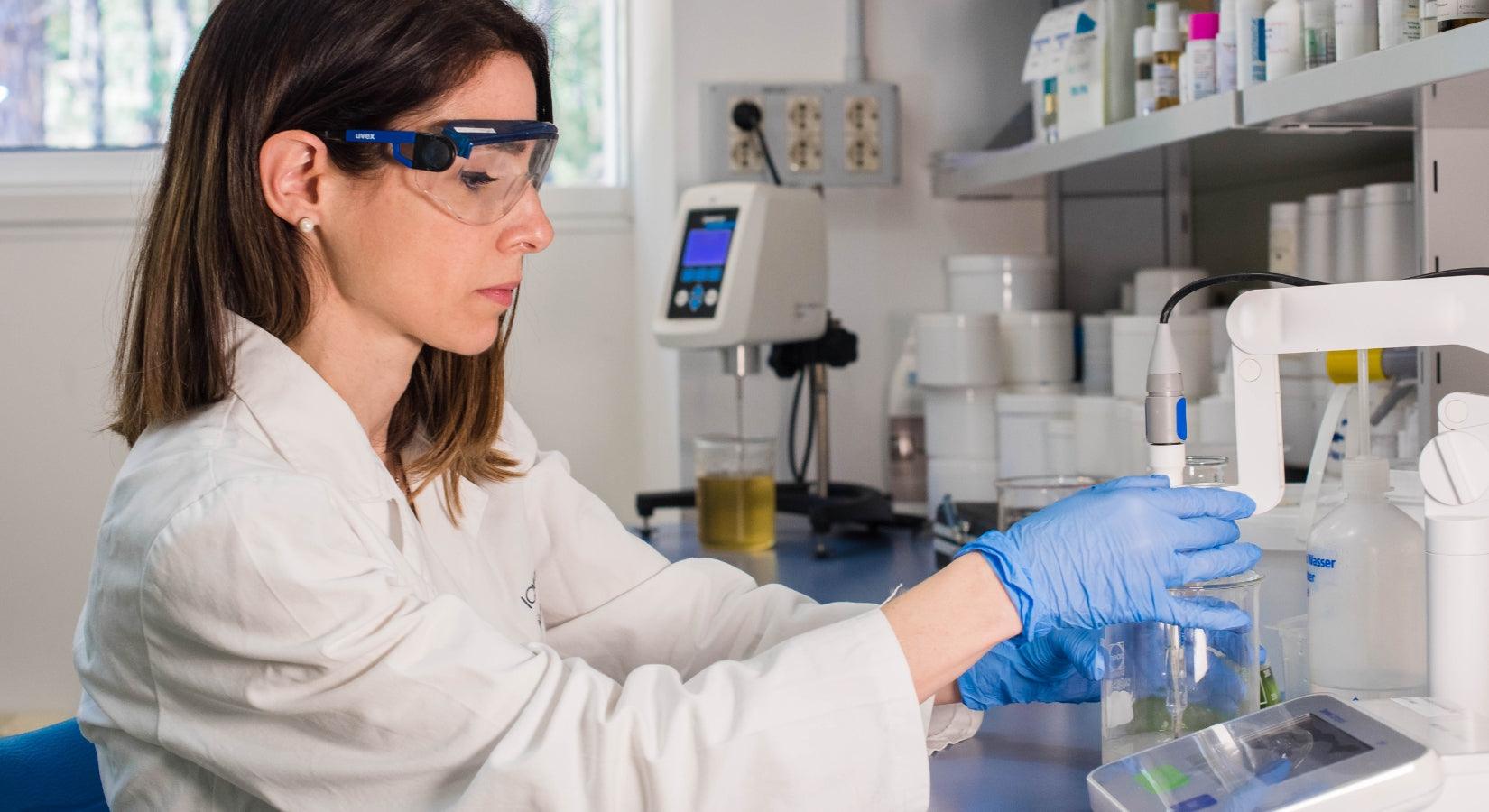
Quantitative determination of copper ion in plating solution | Autotitrator COM-A19
Cu²⁺ + Na₂EDTA → Cu-EDTA + 2Na²⁺
This report introduces an example of the measurement for copper ion in plating solution with chelatometric titration using copper ion-selective electrode.

Quantitative determination of lead ion | Autotitrator COM-A19
The chelatometric titration is generally used for the determination of lead ion (Pb2+). The pH region the lead ion can be directly titrated is pH 3.5 ~ 10 (stability constant = 17.88).1 However, it generates Pb(OH)2 precipitation at alkaline region. When performing titration under alkaline condition, the auxiliary complexing agent such as ethanolamine, tartaric acid, or citric acid should be added in advance to generate weak chelatometric complex and avoid the generation of lead hydroxide precipitation.
It is titrated at pH around 4 ~ 5 when performing under acidic condition. This report introduces an example that the lead ion in sample solution adjusted to pH 5 by hexamine solution is determined with using XO indicator (red purple →yellow).
Pb²+ + Na₂EDTA → Pb-EDTA + 2Na+
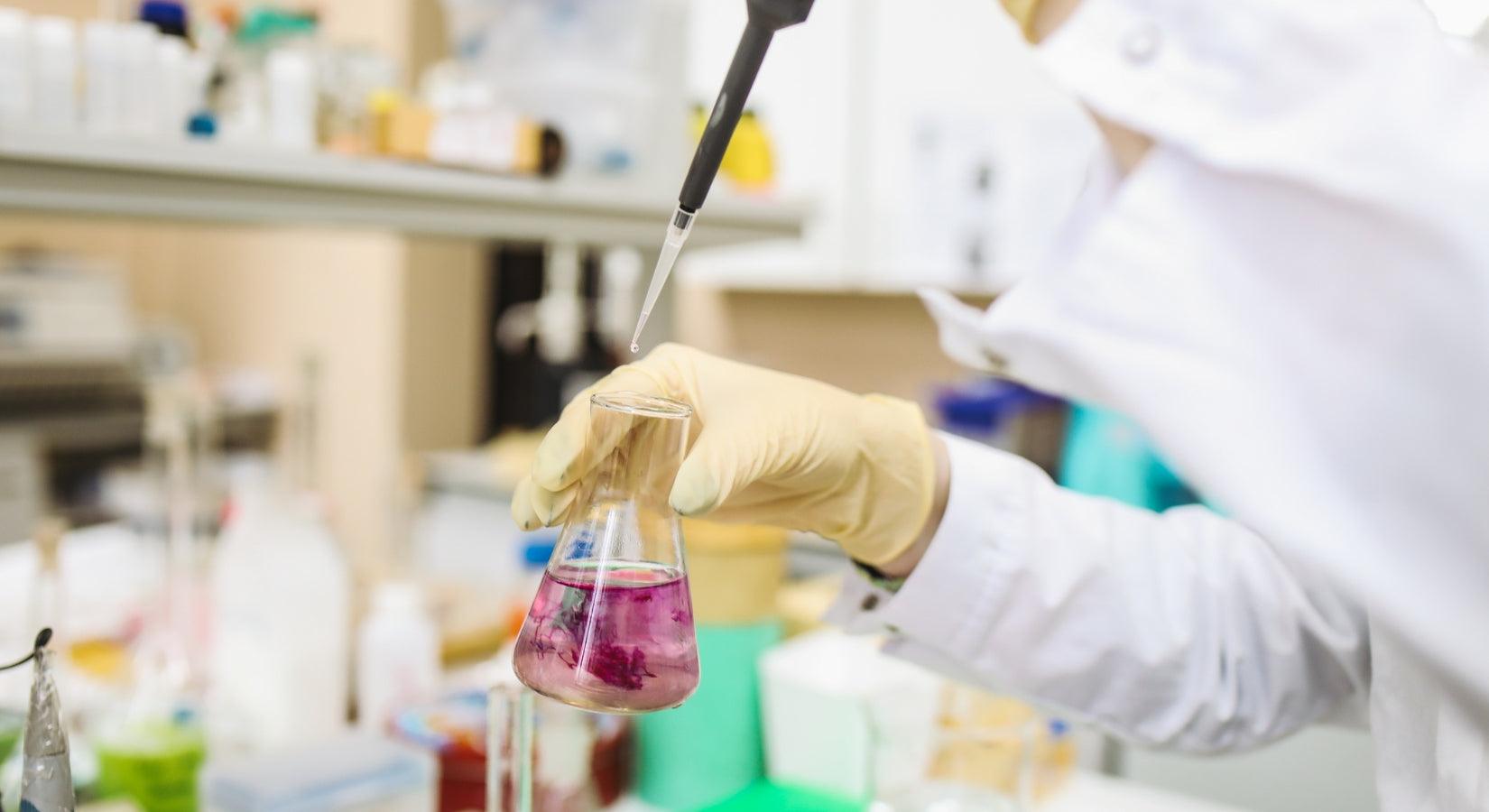
Quantitative determination of manganese ion | Autotitrator COM-A19
Mn²+ + Na₂EDTA → Mn-EDTA + 2Na+

Determination of ferrous and ferric ion in steel cleaning solution | Autotitrator COM-A19
Fe³+ + Na₂EDTA → FeEDTA + 2Na+
Fe²+ → Fe³+ + e-
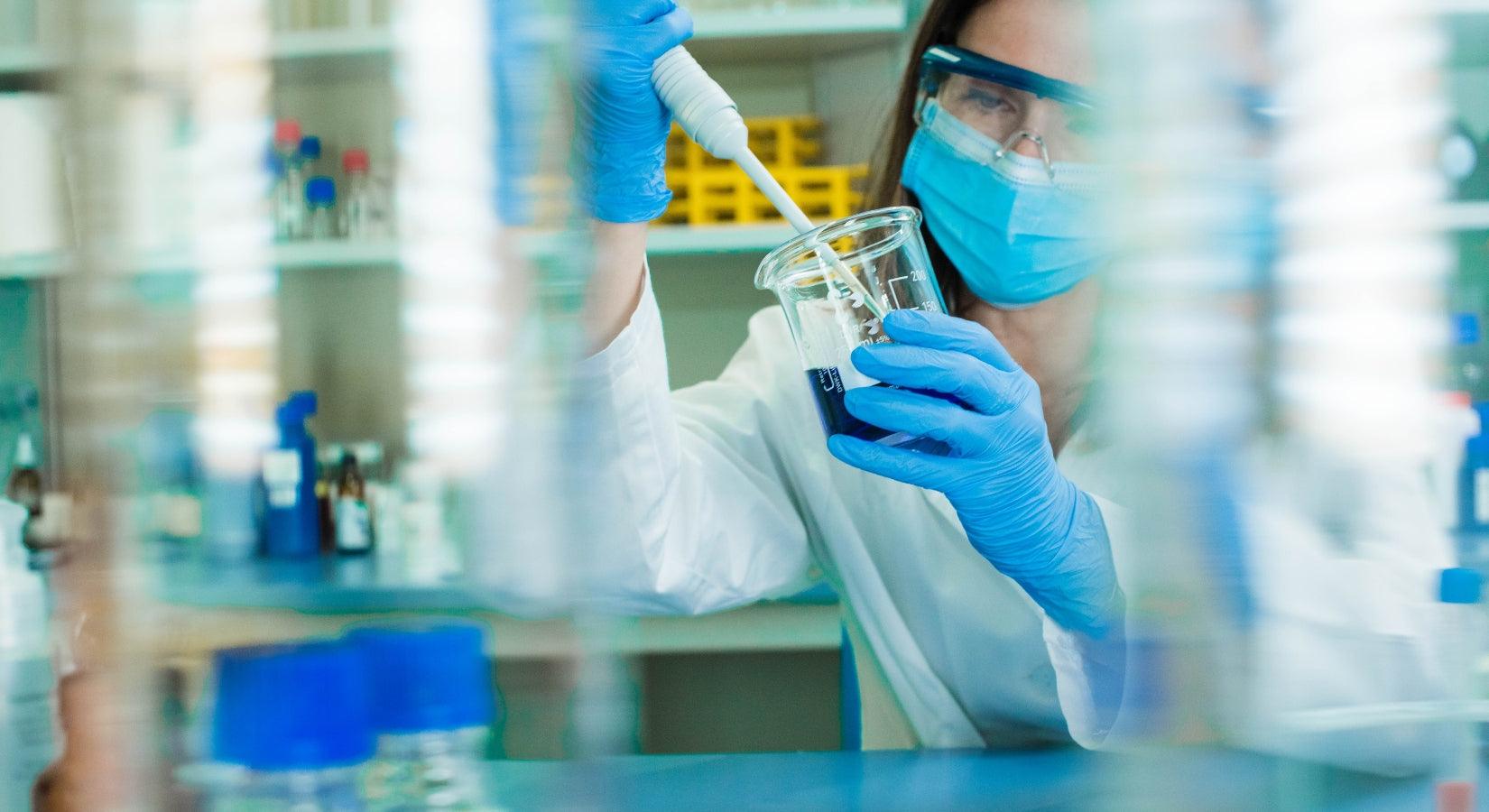
Determination of trace chloride ion in copper sulfate solution | Autotitrator COM-A19
This report introduces an example of the determination of trace chloride ion in the solution containing highly concentrated copper sulfate.
The precipitation titration with silver nitrate standard solution is generally used for the determination of chloride ion in copper sulfate solution. The endpoint of the titration is detected with indicator method or the potentiometric method. The potentiometric method is used for this sample because the color change of indicator reagent is obscure in this sample containing highly concentrated copper sulfate. However, it tends to show the difficulty to detect the endpoint because of the less sensitivity of electrode under highly concentrated copper sulfate. Therefore the potentiometric titration is performed with the specially treated silver electrode that the silver chloride is coated.
Cl- + AgNO₃ → AgCl + NO₃-

Quantitative determination of zinc ion | Autotitrator COM-A19
Zn²⁺ + Na₂EDTA → Zn-EDTA + 2Na⁺

